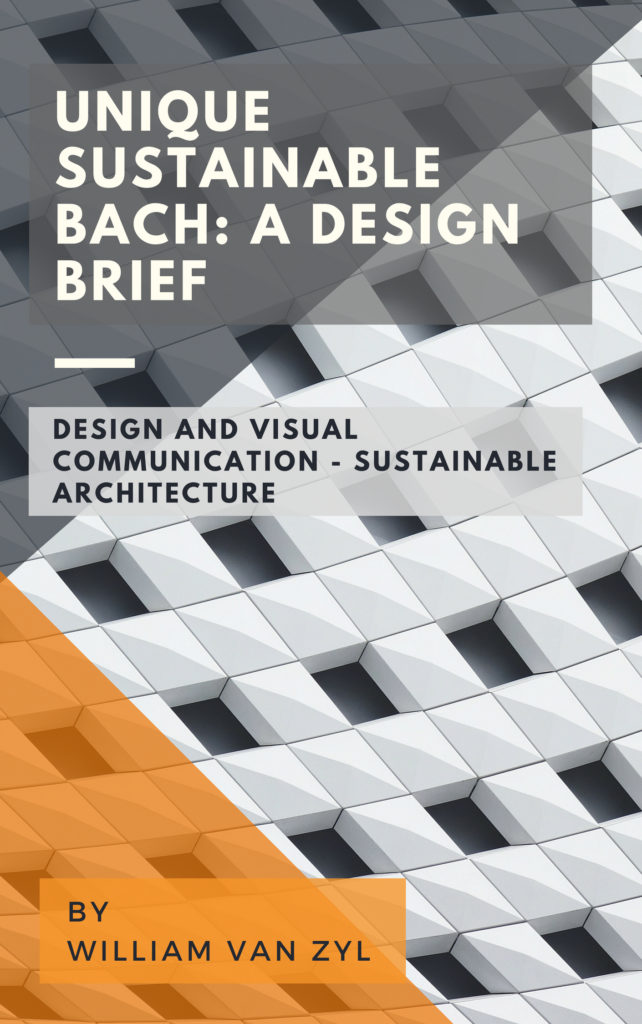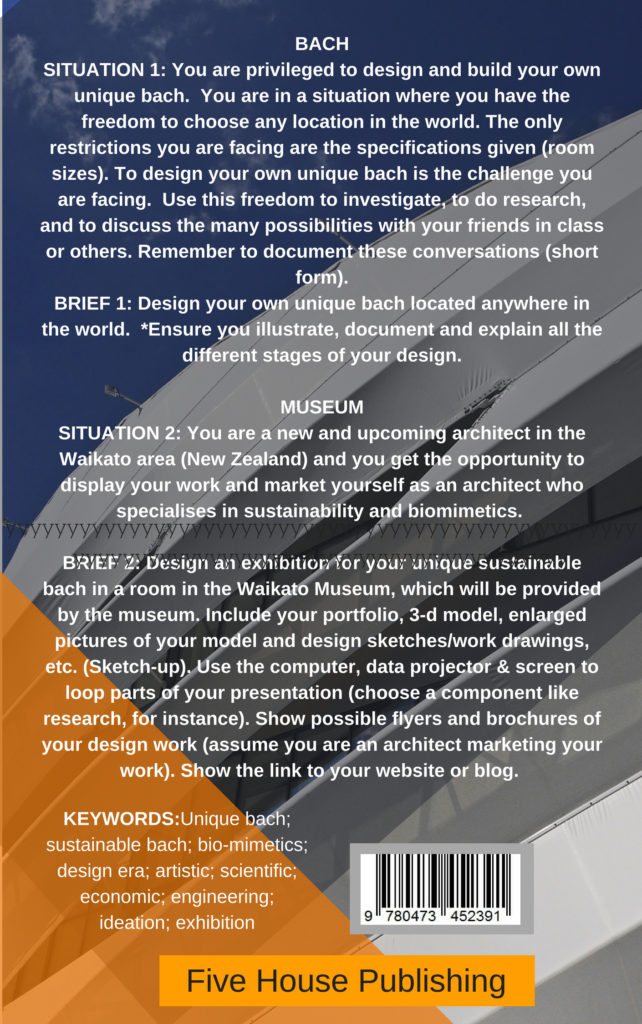Description
Contents
Unique Bach Design Brief: DVC NCEA Level 3 (2016) Page 8
Situation 1: Page 8
BRIEF 1: Page 8
Suggested planning and layout for your design: 11
SECTION 1: Choose a location. Investigate and research the area, terrain, environment, weather, climate and more. 11
SECTION 2: Investigate sustainable baches, research and explore possible shapes and forms for your unique bach. Identify the style you prefer, for example, Modernism or Post Modernism. 12
DESIGN ERAS TIMELINE: 12
Minimalist or Minimalism style: 12
Minimalism Style Architects: 13
SECTION 3: Identify the specifications for the batch (size of rooms, different rooms and possible layouts). Use a bubble diagram to explore the possible layouts and configurations. 13
BUBBLE DIAGRAM (ARCHITECTURE): 14
SECTION 4: Explore a vast range of components, influences, ideas, scientific/artistic /sustainable ideas for your unique bach. 14
SECTION 5: Once you have done all the investigation, research and explored the possibilities it is time to do your ideation (generate design ideas). 15
‘How to think like an architect – The design process’. 15
‘How to Think Like An Architect: Designing From Organic Form’ 16
SECTION 6: Now only are you ready to make a freehand drawing of your 2 to 3-floor plans. The challenge is to merge (mix everything you have done to this point) together to come up with a unique bach design. You are encouraged to think differently, extend your boundaries, be adventurous, be creative and innovative and break the mould. 16
See YouTube video: How to draw a house floor plan like an Architect (freehand sketching & tracing) 17
The following sections (7, 8 & 9): As per previous DVC courses. 17
Section 10: Exhibition of model, work drawings and more: 18
SITUATION 2: You are a new and upcoming architect in the Waikato area (New Zealand), and you get the opportunity to display your work and market yourself as an architect who specialises in sustainability and biomimetics 18
BRIEF 2: Design an exhibition for your unique sustainable bach in a room in the Waikato Museum, which will be provided by the museum. Include your portfolio, 3-d model, enlarged pictures of your model and design sketches/work drawings, etc. (Sketch-up). 18
SPECIFICATIONS AND AVAILABLE RESOURCES AT THE MUSEUM: 19
Video YouTube-exhibition Architecture: ‘STUDENTS PREPARING A MUSEUM OR EXHIBITION SPACE TO DISPLAY THEIR WORK (ARCHITECTURE)’ 22
3-D MODEL: You should create a 3-D model with the 3-D printer of your unique sustainable bach. 23
SPECIFICATIONS FOR UNIQUE BACH (Areas specified are not to be exceeded): 24
SOME UNIQUE BUILDINGS AND IDEAS YOU COULD INVESTIGATE AND USE: 24
Architecture Timeline – Historical Periods and Styles of the West 24
A Quick Tour of Architectural History. 24
Look at the Inverloch Sand Dune House, Australia. 26
VILLA-F-PROJECT: 28
Discuss and illustrate the following with regards to your design decision (Unique Bach Design): 30
Format and software used to compile your work: 31
The DVC Level 3 credits: 32
DVC website: 32
Appendix A: 33
Section for teachers (including references to research): 37
This paper is to inform teachers about the disadvantages of Peer Learning (PL), Peer-to-Peer collaboration (P2P), and Peer Assisted Learning (PAL). By looking at the disadvantages, it will consequently inform and prompt teachers to think about the advantages. The management of P2P collaborative processes PAL and PL are at the heart of this research. 37
Abstract: 37
Keywords: 39
Introduction. 39
What is peer-to-peer collaboration?. 39
What is peer-assisted learning?. 40
What is peer learning?. 40
Comments below on disadvantages listed from no. 1 to 6 by W van Zyl–referring to Table 4 (Topping & Ehly, 1998): 43
Disadvantage no. 1: Build time into PAL courses and tutoring. 43
Disadvantage no. 2: Monitor PAL and P2P closely and give feedback as soon as possible. 43
Disadvantage no. 3: The ‘range and depth’ of PAL and P2P teaching and learning. 44
Disadvantage no. 4: Close monitoring of PAL and P2P and the rapid changes required by tutors to keep learning and teaching on track. 45
Disadvantage no. 5: Ethical concerns: accountability, peer competence, and informed consent regarding PAL and P2P courses. 45
Disadvantage no. 6: General misconceptions: No equal opportunities; students are not teachers; not effective for all groups (e.g. gifted and talented, students with learning difficulties, physically disabled students, and other categories). 46
Conclusion: 47
References: 48
APA Referencing & citation: 50
Van Zyl, W.N. (2016). P2P collaboration: The disadvantages of P2P (peer-to-peer) collaboration, PAL (peer-assisted learning) and PL (peer learning). Published to http://williamvanzyl.com/ or https://fivehousepublishing.com/. 50
Additional resources: Tutorials on P2P/PL/PAL platforms and systems 51
APA Referencing and Citation: 52
About the researcher (author): Page 53
See the video of Barry Berkus: “How to think like an architect.”










